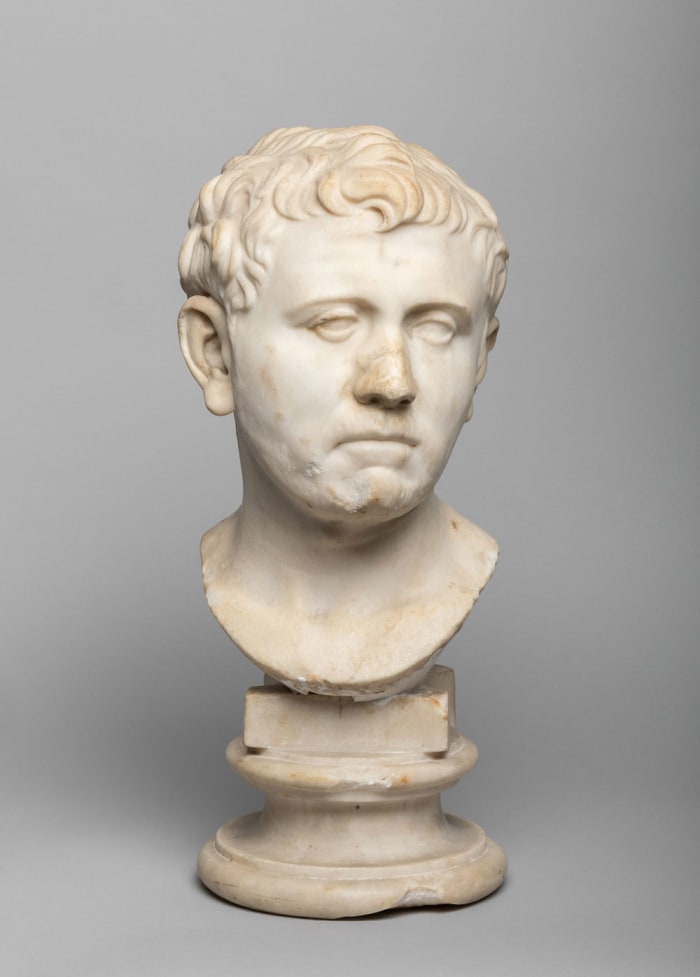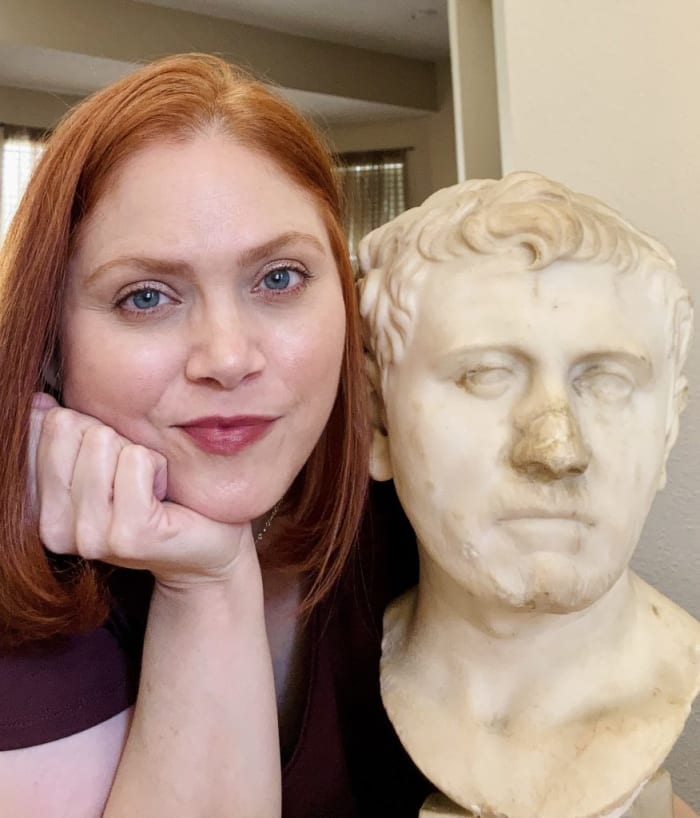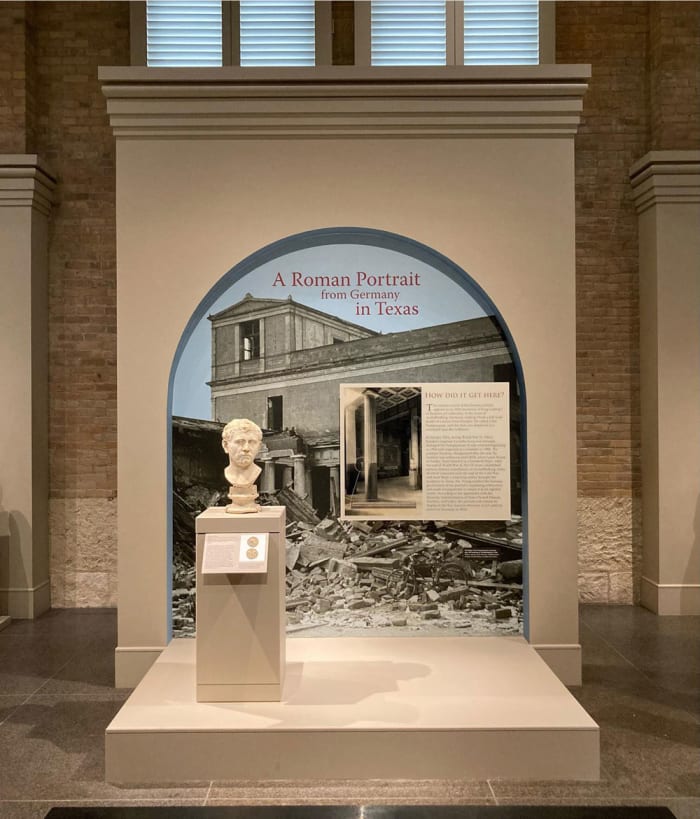When a Texas woman shopping at an Austin Goodwill in 2018 spotted a marble bust for $34.99, she took note of its natural wear and gravitas and knew it was special.
But little did Laura Young, who owns Temple of Vintage and has an eye for treasures, know at the time just how special it is: It is an ancient Roman bust that’s nearly 2,000 years old and of one of Julius Caesar’s greatest enemies. The bust was also once owned by King Ludwig I of Bavaria and looted from the Nazis by American soldiers during World War II.
Young started contacting specialists from museums and auction houses about the bust and Jörg Deterling, a consultant at Sotheby’s, was eventually able to identify it as a relic from the Julio-Claudian era.

This $35 Goodwill purchase is a missing ancient Roman bust from Germany.
Courtesy of Joel Salcido / San Antonio Museum of Art
The bust is thought to portray the military leader Sextus Pompey, a son of Pompey the Great who took on Julius Caesar in a Civil War and lost. Sextus, who was eventually executed, attempted to avenge his father in a battle with Caesar’s successors.
“My nearly 4-year relationship with a 2,000-year-old Roman portrait head owned by King Ludwig I of Bavaria and looted from the Nazis by the allies / Americans in WWII has finally come to an end and I can FINALLY blab about him!” Young posted on Instagram. “If you know me personally you know I have a big mouth so this has been hard. Yes, I got him at the Far West Goodwill here in Austin. Yes, he was $35. He’s on loan with the San Antonio Museum of Art until next year.”

Laura Young with the bust she found at Goodwill that is thought to likely depict Sextus Pompey, who dedicated his life to avenging his father’s death.
Courtesy of Laura Young via Instagram
According to a press release from the San Antonio Museum of Art, where the piece is currently on display, the Roman bust dates from the late first century BCE to the early first century CE. The earliest known record of it is in the 1833 inventory of King Ludwig. It was one of the objects displayed in his Pompejanum, a full-scale replica of a Pompeii villa built for enthusiasts to study ancient culture. The city of Aschaffenburg, where the villa is still located, was heavily bombed during World War II, and when it was restored in the 1960s, the bust was not recovered. It is most likely that it had been taken home by a U.S. soldier.
“After the war, the United States Army established various military installations in Aschaffenburg, many of which remained until the end of the Cold War,” says the museum’s statement. “Most likely a returning soldier brought the sculpture to Texas, where it remained unknown until 2018.”
“There were a few months of intense excitement, but it was bittersweet since I knew I couldn’t keep or sell the (bust). Either way, I’m glad I got to be a small part of (its) long and complicated history, and he looked great in the house while I had him,” Young says in the museum’s release.
She also told the New York Times that she had nicknamed the bust “Dennis Reynolds,” after a main character on the TV show, It’s Always Sunny in Philadelphia.
The museum plans to keep the work on display until its return to Germany in 2023, per an agreement with the Bavarian Administration of State-Owned Palaces, Gardens, and Lakes.
“It’s a great story whose plot includes the World War II era, international diplomacy, art of the ancient Mediterranean, thrift shop sleuthing, historic Bavarian royalty, and the thoughtful stewardship of those who care for and preserve the arts,” says museum director Emily Ballew Neff.
You might also like
Chinese vase found in kitchen could fetch $186K
A bowl found at a yard sale for $35 fetches $700K
A drawing bought at an estate sale for $30 could be worth $10M










